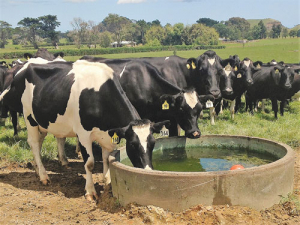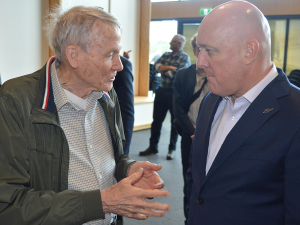A cow with no milk fever is 2.5 more times likely to conceive. Milk fever causes a 14% drop in production in clinical cases and 7% in subclinical cases.
Poletti told the recent BDO Farming Expo in Taranaki that his consultancy Mineral Systems is succeeding against milk fever on individual farms.
“We want this for all Taranaki and to show the rest of New Zealand what can be done so that the new norm is not accepting milk fever,” he says.
Mineral Systems is also behind a milk fever-free Taranaki campaign which aims to get milk fever down to below 1% clinical cases by 2019.
Poletti says too many farms tolerate sick and down cows.
“This is accepted as the norm; for every one cow that has physical disease signs there will be 20 sub-clinically affected. This means if 5% of your herd are down with milk fever in a season, the whole herd has been affected; this has a massive impact on production and other roll-on health and fertility issues.”
Poletti urges farmers to “consider the whole picture” when considering fertiliser for their farms.
“Too often we focus on nitrogen by fertiliser and pump this in, but it’s then toxic to cows: they don’t want to eat the grass as it tastes yuk, the grass can’t take any more and it runs into the streams.
“The optimum is for cows to really want to eat, so they have to be in tip-top health and the food has to taste nice to them. Also they need the right vitamins. Techniques such as dusting paddocks means bossy cows eat the good grass and push others onto the dusted.”
A good way to minimise fertiliser is to increase the nitrogen in soil with clover, Poletti says. The optimum level is 20-30% cover by clover; most farms have 2%, he says.
“If you fertilise and look after your clover the grass grows from the nitrogen the clover generates. Cows love clover and it also digests really well.
“If you have a cow-centred focus – health and dietary management (including clover) -- this will reduce the nitrogen runoff and cows will be heathier and this equals greater production and profitability and lower animal health and fertiliser cost.”
Poletti says 80% of the farms he has advised have boosted milk yield by up to 20%.
Fewer drugs, more customers
Pat Poletti says the dairy industry is moving quickly towards more sustainable farming practices.
He says animals need to be a major focus of this since they are the main source of income.
Consumers are demanding sustainable dairy products and will shop elsewhere if the NZ dairy industry fails to meet their expectations. “More and more people are demanding better animal welfare and fewer drugs,” which requires fewer production diseases such as milk fever. “Fewer diseases will mean better animal health and therefore fewer drugs.”
















